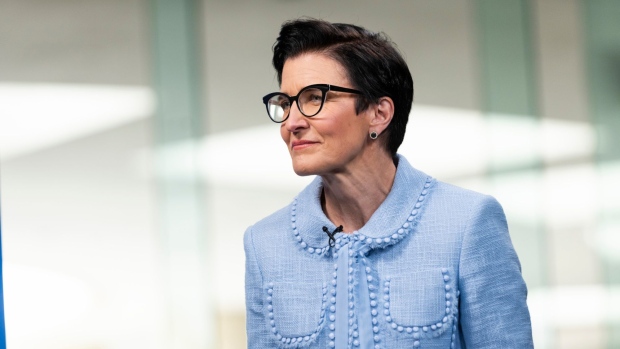Sep 20, 2022
Citigroup Boosts Diversity Targets After Surpassing Earlier Goals
, Bloomberg News

(Bloomberg) -- Citigroup Inc. is raising its targets for improving the diversity of its executive ranks after surpassing an earlier goal.
By 2025, the Wall Street giant hopes to increase the percentage of Black employees in roles from assistant vice president to managing director to 11.5% in the US, Puerto Rico and Canada after it surpassed an 8% target for the US last year. Globally, it aims to increase the share of women in those roles to 43.5%, up from 40.6% at the end of last year.
“We see this as a long-term strategy, not a short-term objective,” Chief Executive Officer Jane Fraser, the first woman to oversee a major US financial institution, said in a memo to staff. “We will continue embedding diverse representation and equity in our business strategy as well as our executive scorecards so that it’s standard practice.”
Citigroup has long said the hiring and retention goals are part of its efforts to close the gap between what it pays female and male employees. The New York-based company is one of the few to offer a frank assessment of that disparity, with Citigroup reporting that the median pay for women was 26% less than for men in 2021.
The company unveiled a bevy of new targets for managers globally as part of the revamped 2025 goals. In the US, it now hopes to increase the share of Hispanic employees in roles from assistant vice president to managing director to 16% from 13.7% at the end of last year. In the UK, its aim is to have Asian employees represent 11% of the total, with a 3% goal for both Black workers and those of mixed or other underrepresented ethnicities.
In Brazil, the firm is aiming to have 10% of its employees be Black or Pardo, a term used to refer to Brazilians of mixed ethnic ancestries.
The company is also setting new targets for campus hiring. In North America for that category, it hopes to increase its hiring from underrepresented races and ethnicities, including Hispanic and Black candidates, to 30% from 28.4%. Globally, it plans to increase the number of candidates it hires from the lesbian, gay, bisexual, transgender and queer communities to 3.5% from 2.1% currently.
©2022 Bloomberg L.P.


